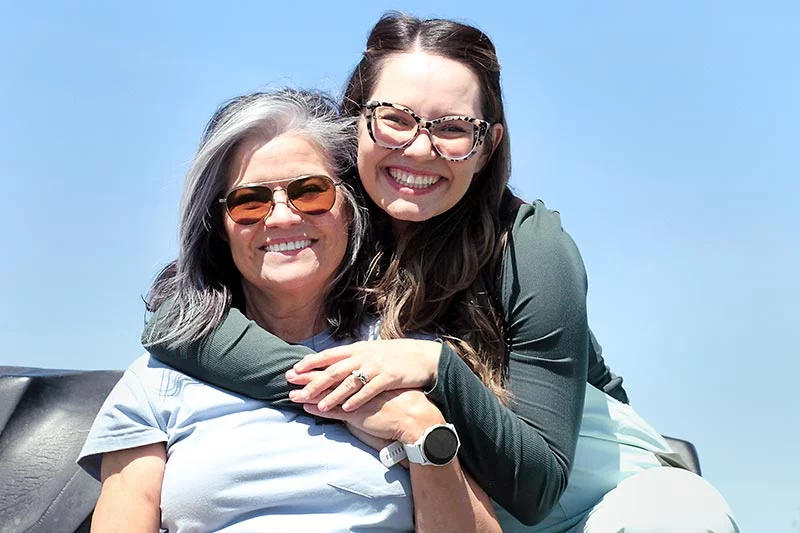Heart attack care
World-class treatment for a life-changing event.
When you have a heart attack, every second counts.
A heart attack is also called an acute myocardial infarction (MI). It happens when one or more parts of the heart muscle don’t get enough oxygen, which occurs when blood flow to the heart muscle is blocked. That part of the heart muscle is damaged and starts to die.
Our response times—measured in “door-to-balloon” times—are consistently faster than the national standard. Door-to-balloon refers to the time it takes to get you through the hospital doors to a life-saving balloon catheter procedure to clear the blockage.

Timely, personalized care
In any heart attack, the affected muscle cells of the heart begin to suffer damage and start to die. Permanent damage begins within 30 minutes of blockage, so treatment must begin as soon as possible. The type of heart attack determines the treatments that your heart and vascular team will recommend.
Complete blockage
A complete blockage of a coronary artery means you suffered a STEMI heart attack or ST-elevation myocardial infarction.
Partial blockage
Called an “NSTEMI” heart attack or a non-ST-elevation myocardial infarction.
Treatment differs for a STEMI versus NSTEMI heart attack, although there can be some overlap. We begin immediate treatment with common techniques that restore blood flow to the part of the heart muscle damaged during a heart attack:
- Clot-dissolving drugs (thrombolysis).
- Balloon angioplasty (PCI).
- Surgery.
- A combination of treatments.
Common heart attack symptoms
Common heart attack symptoms
Each person may have slightly different symptoms of a heart attack, but these are the most common:
- Anxiety.
- Pain in the back and/or jaw, and pain that travels down one or both arms.
- Chest pressure, squeezing, aching or burning.
- Excessive fatigue or weakness.
- Feeling of fullness.
- Nausea or vomiting.
- Shortness of breath.
Symptoms unique to women
Some heart attack symptoms can be different between men and women. Women may be less likely to seek immediate medical care, which can cause more damage to the heart.
- Men normally feel pain and numbness in the left arm or side of chest, but in women, these symptoms may appear on the right side.
- Women may feel completely exhausted, drained, dizzy or nauseous.
- Women may feel upper back pain that travels up into their jaw.
- Women may think their stomach pain is the flu, heartburn or an ulcer.
Atypical symptoms
In an atypical presentation, the signs and symptoms are different. The patient may not complain about pain or pressure in the chest. Be alert for the following:
- A sharp or “knife-like” pain that occurs with coughing or breathing.
- Pain that spreads above the jawbone or into the lower body.
- Difficult or labored breathing.
Risk factors
A heart attack can happen to anyone, but certain factors can raise your risk for one. Some of these factors you can’t change. But you might be able to manage other factors through lifestyle changes and medical care.
You may be at higher risk for a heart attack if you:
- Have a family history of cardiovascular disease.
- Have high blood pressure.
- Are overweight or obese.
- Have a sedentary lifestyle.
- Use tobacco products.
- Have metabolic disease, diabetes or other illnesses.
What you can do: Hands only CPR

- Hands only CPR is where only chest compressions are given instead of chest compressions and rescue breaths (in conventional CPR).
- The goal of hands only CPR is for bystanders to start chest compressions without giving rescue breaths on a stranger.
- Chest compressions at the beginning of a cardiac arrest pushes remaining oxygen in the blood throughout the body to the organs.

A team approach to care
A full cardiology team will treat your heart attack, including cardiac specialists and emergency care providers. Every step we take will put you on the right path for recovery.
References
American Heart Association (AHA). Treatment of a Heart Attack – https://www.heart.org/en/health-topics/heart-attack/treatment-of-a-heart-attack
Center for Disease Control and Prevention (CDC). COVID-19 Treatments and Medications – https://www.cdc.gov/heartdisease/heart_attack.htm






